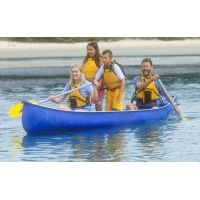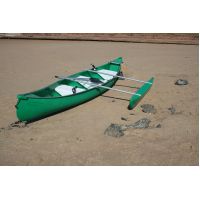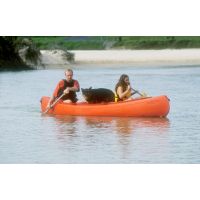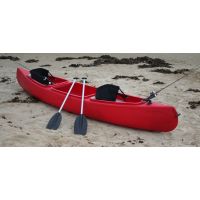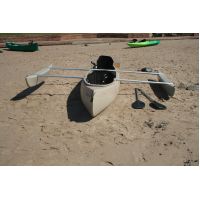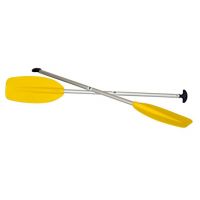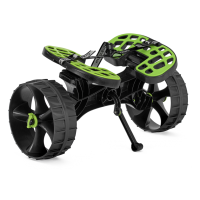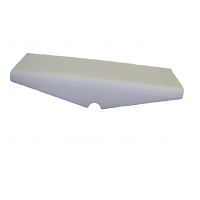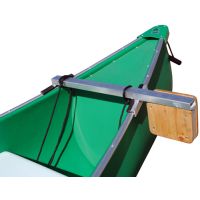Cart is empty
Kayak Questions
We are often asked questions about paddling in general and about Australis products in particular. If you have a question that has not been answered in these pages, please contact Australis on 02 4285 2000.
To make it easy to find what you are looking for, questions and answers relating to:
GENERAL KAYAK Questions
What length kayak do I need?
This will depend on how far you will want to paddle, and how fast you want to go?
As a rule of thumb, the further you want to paddle, the longer the kayak you will need and the faster you want to go, the narrower the kayak you want. Longer length and narrower width have both advantages and disadvantages.
The first performance feature where there will be some trade-off that you will need to consider is "tracking" and "turning".
- "Tracking" refers to how easy it is to keep the kayak on a straight course.
- "Turning" refers to how easy it is to turn the kayak.
Generally, the longer the kayak the easier it is to run on a straight course (better tracking), and the shorter the kayak the easier it will turn.
The other performance feature that you will need to consider is "speed" versus "stability".
- You get your speed from length and width.
- You get your stability from width and hull shape.
Generally, the faster the kayak is, the less stable it will be and the more stable the kayak is, the slower it will be.
Why do you use multi-chined hulls on your kayaks instead of flat hulls?
We actually use both flat hulls and multi-chined hulls.
We use flat hulls on our flat water touring kayak, the Platypus, as well as the Bass and Barra.
As the Platypus is recommended to use on flat water (and not in rough water conditions), a flat hull offers sufficient stability. The extra width of the Bass and Barra kayaks give these kayaks great stability as well.
The Saratoga kayak has a multi-chined hull, as it is designed to be used in rougher water conditions, than our other kayaks. A multi-chined hull has slightly less primary stability but with the addition of useful secondary stability.
This secondary stability is likened to having training wheels on a pushbike, whereby, if the kayak tilts because of rough conditions the secondary stability "catches" you and is like a warning to let you know to get more upright, or you will fall in.
- Many kayaks might be the same length as our Saratoga "bay touring kayak", and have a number of the same features, but the shape of the hull means they will not be as stable as the Saratoga in rougher water conditions, such as on bays where wind chop and motor boat wake are regular obstacles.
HATCHES
Why do Australis use rubber push-on hatches and not screw hatches or hard covers over neoprene?
Australis use rubber push-on hatches, as we have found in our extensive paddling experience, that they offer the most watertight seal possible, as well as being the most user friendly.
Screw hatches give you access to internal storage, but are generally not very water-tight, as the profile that the hatch lid screws into has to be cut into the kayak and then secured with screws or nuts and bolts. Also, screw hatches can become cross-threaded if not lined up carefully, as well as being difficult to close and open if sand gets caught in the thread.
Hard covers over neoprene is also a popular option. Australis have used these type of hatches before and found they can also be diffcult to use and offer varying degrees of watertight effectiveness.
SEATS
Other kayak seats are padded, will they be more comfortable than the Australis seat?
The shape of the seat will actually affect comfort more than padding will.
Whilst Australis seats do not have extra foam and padding, they have a reputation for being one of the most comfortable seats to sit in for extended periods of paddling. We are actually aware of people who have purchased a very well known fibreglass sea kayak brand, who are taking out the seat that comes with the sea kayak and replacing it with an Australis plastic seat.
The shape of the seat used in all Australis kayaks, was developed by David Slattery through his years of marathon kayak paddling. David has competed in the Hawkesbury Canoe Classic (111km of continuous paddling - 5 times) and the Nepean 100 Miler (160km of continuous paddling - 5 times), so this is why we know that our kayaks can be paddled for hours and hours in comfort.
Can you fit a deluxe sit-on-top backrest into a kayak?
Yes.
Although it is not something that we do for ourselves, for people who actually need a higher back support or want some extra padding, we do offer the service of fitting a couple of attachments into your kayak that will allow you to add and remove a sit-on-top backrest. Be aware that you cannot fit a spray deck while this higher backrest is being used.
TOGGLES
I have noticed you have toggles at the end of your kayaks, whilst some other kayaks have moulded-in handles. Why?
Australis use toggle hands on rope so that when you are carrying your kayak with 2 people, you can position you hand in a way that is most comfortable for you.
We have found that some kayaks with moulded-in handles, make you hold your arm in an unnatural position, and if carrying over an extended distance or time, can cause great discomfort and even injuries.
SPRAYDECKS
Do you have spraydecks to suit your kayaks?
Yes, and depending on they type of paddling you are planning on doing and the kayak you choose from our range, you have your choice of:
- Combination neoprene and rip-stop nylon
- Full neoprene
We are often contacted by customers who have purchased a kayak and are now looking for a spraydeck, but the shop the kayak was purchased from do not have a spraydeck that fits.
We advise that if you think you are going to want a spraydeck for your kayak (or any other accessory) that you make sure that it is available before making your purchase.
RUDDERS
How is a skeg different from a rudder?
Generally, a skeg is used to assist with straight line tracking, as it helps to stop the rear of the kayak moving away from the centre line.
- Some skegs are moulded into the kayak (like on our Barra), whilst others are an extra that is added on later.
- The other option that you may come across is that some skegs are fixed in position, whilst others are "retractable".
Why do Australis use rudders instead of just a skeg?
A rudder gives you more control than just a skeg, as rudders are used to assist with straight line tracking, as well as turning, and especially to counter the effects of wind and wave action on your kayak.
As mentioned above, a skeg helps to maintain the position of the stern (rear) of the kayak, and the paddler turns the kayak using paddle strokes. To turn the kayak, the paddler will generally use both forward and reverse paddle strokes. Using reverse strokes, whilst turning the kayak, interrupts the forward motion of the kayak, slowing it down, and then the paddler needs to exert more effort to get the kayak back up to it's cruising speed.
A rudder allows maximum forward momentum to be maintained at all times. Turning is effected through use of foot operated rudder controls, whilst the paddler keeps their paddling rhythm undisturbed.
What do I need to do to maintain my kayak with a rudder?
We recommend that you hose off your rudder cables and footrests if you have been in sandy or salty conditions to minimise salt build up on these parts, that can make it difficult to adjust for another person.
Beore each extended journey or open ocean paddle, check that all of your cables are in good condition and not frayed or close to breaking. It is also a good idea to carry spare cable in your kayak in case one of your cables breaks.
TRANSPORT
How do I transport my kayak on my car? Do I need cradles?
As a general rule, plastic kayaks can be transported on the roof racks, without the need for cradles. It is generally recommeded that you put the kayak on upside-down, to protect the shape of the hull.
However, in some instances kayak cradles may be an advantage.
- If you prefer to transport your kayak up the right way, cradles offer more support.
- J-shaped cradles assist when carrying 2 kayaks that are too wide for your roof racks as they allow either one, or both, to be carried on their sides.
© 2013-2025 Australis Canoes. Powered by AVS Online Store

